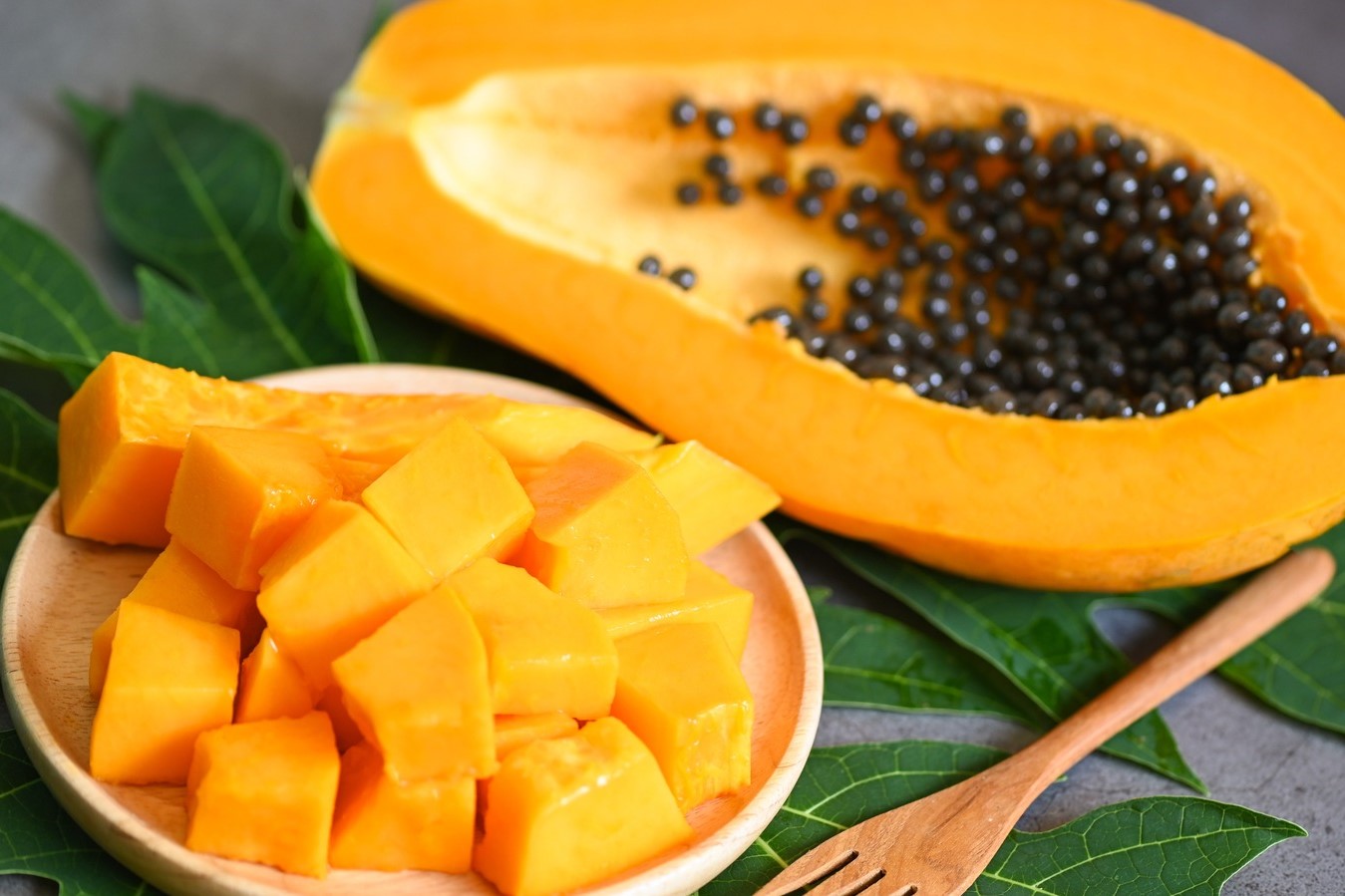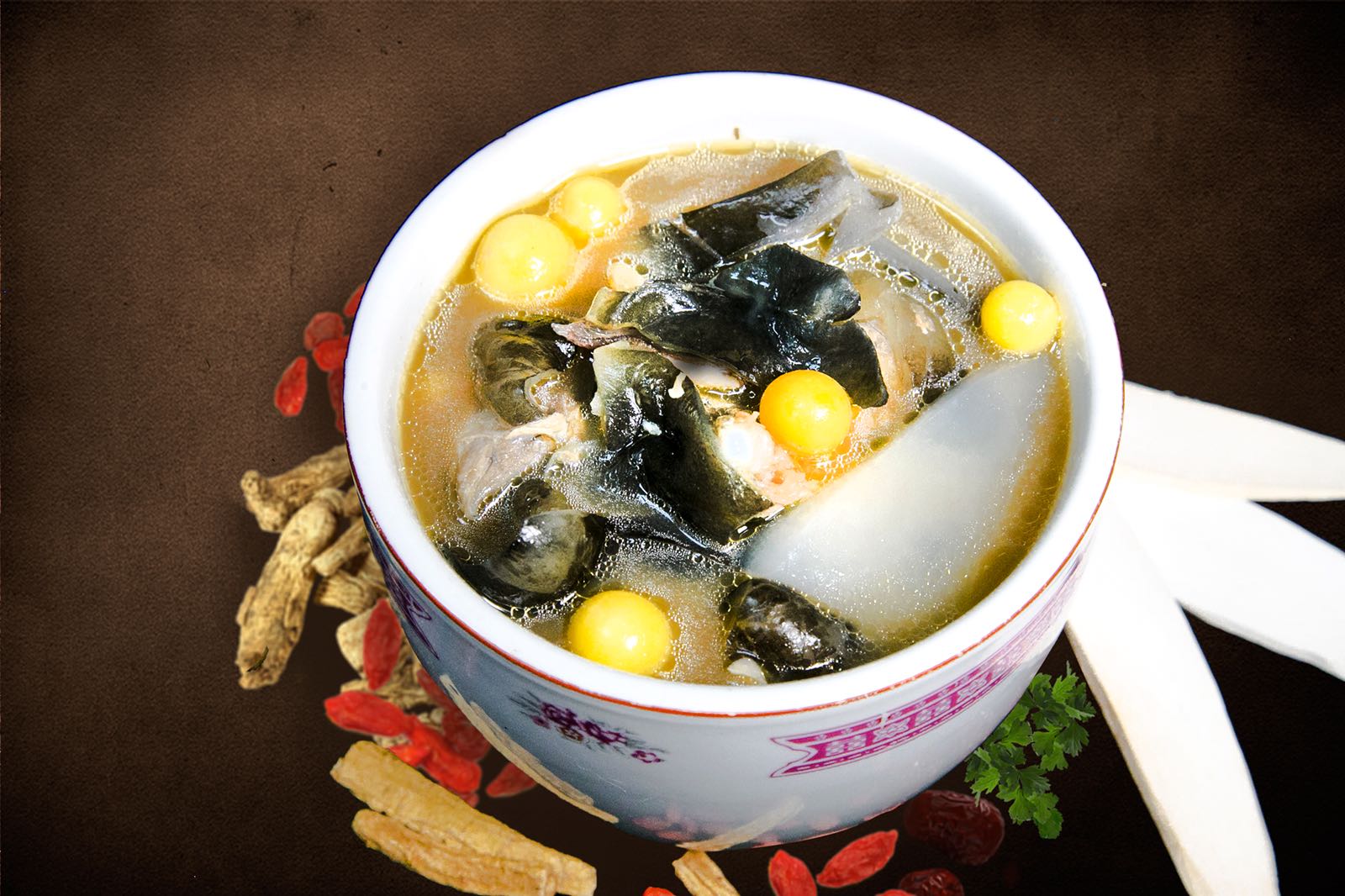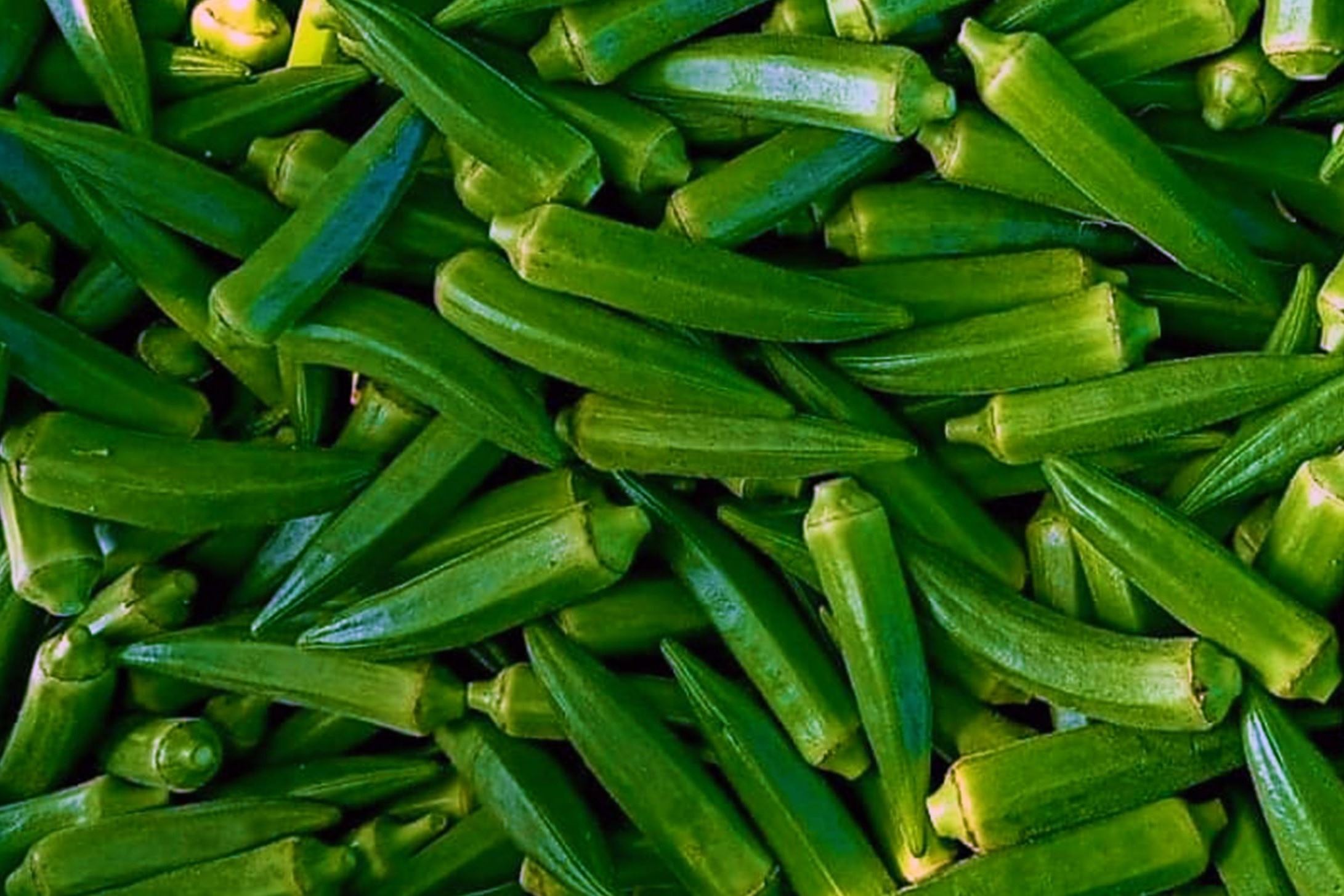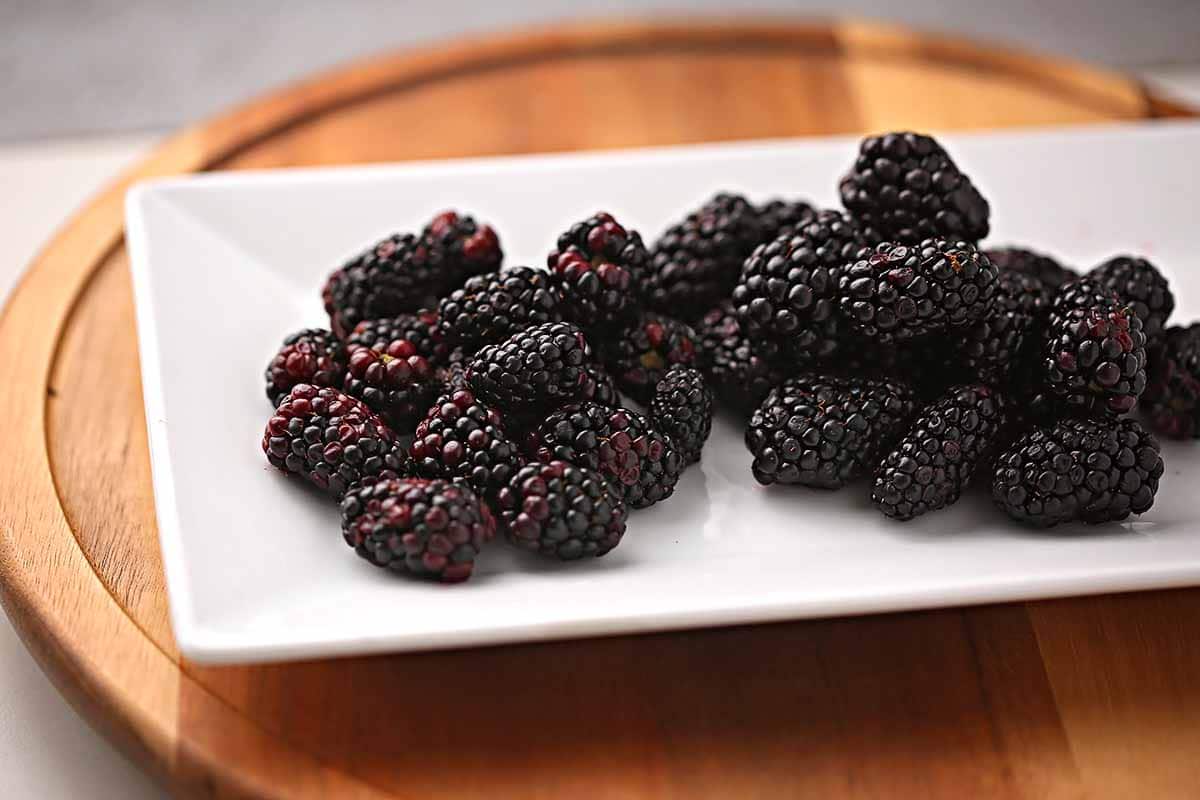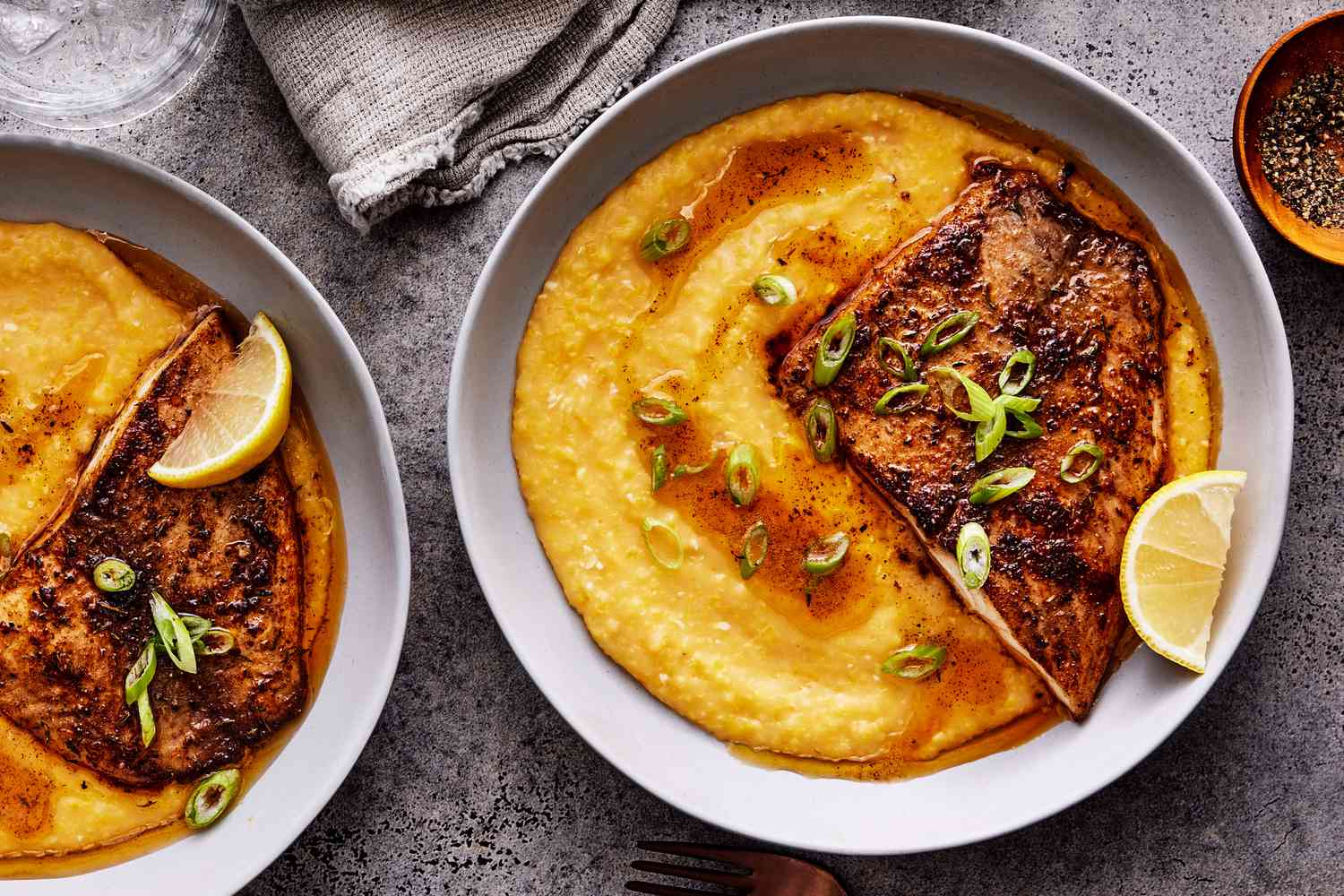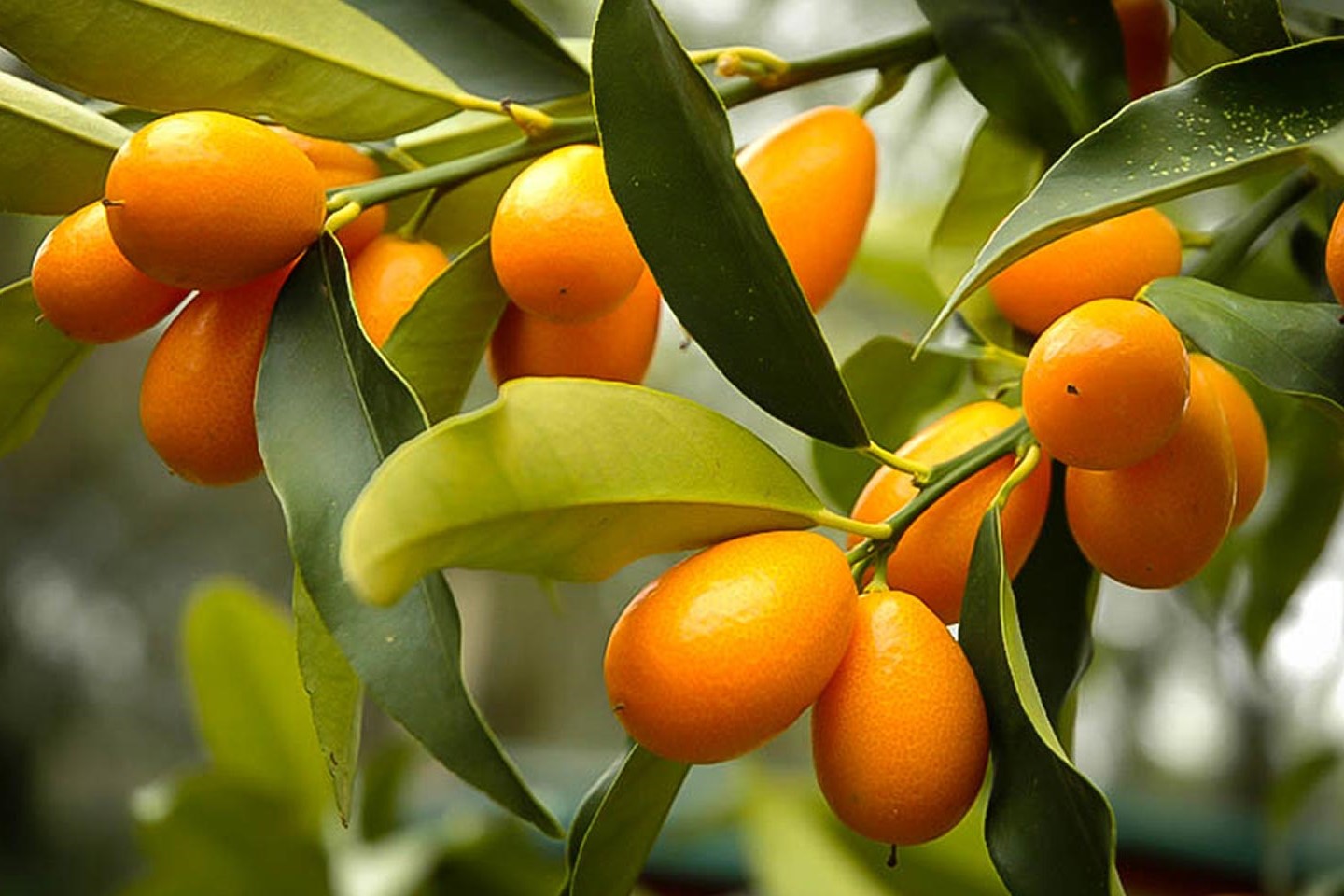Home>Food and Cooking>How To Describe The Taste Of Papaya
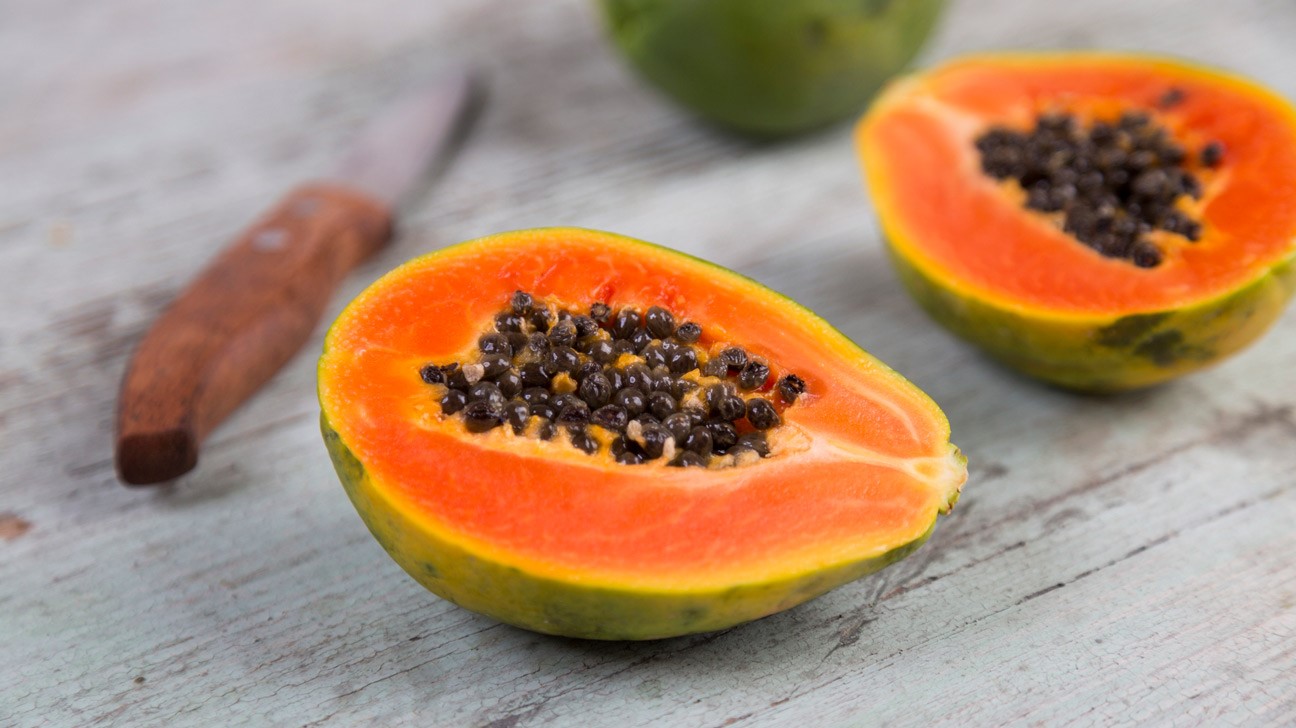

Food and Cooking
How To Describe The Taste Of Papaya
Published: February 28, 2024
Learn how to describe the taste of papaya and enhance your food and cooking vocabulary. Discover the unique flavors of this tropical fruit and improve your culinary skills.
(Many of the links in this article redirect to a specific reviewed product. Your purchase of these products through affiliate links helps to generate commission for Noodls.com, at no extra cost. Learn more)
Table of Contents
Introduction
Papaya, a tropical fruit known for its vibrant color and unique flavor, has captivated the taste buds of people around the world. Whether enjoyed on its own, blended into a refreshing smoothie, or incorporated into a savory dish, the taste of papaya is a delightful fusion of sweetness and subtle tanginess. Understanding how to describe the taste of papaya is essential for food enthusiasts, chefs, and anyone seeking to appreciate the nuances of this delectable fruit.
The allure of papaya lies not only in its taste but also in its versatility. From its luscious orange flesh to its abundance of black seeds, each component contributes to the overall sensory experience. As we delve into the intricacies of papaya's flavor profile, we will uncover the factors that influence its taste, providing a comprehensive understanding of this tropical delight.
Describing the taste of papaya goes beyond mere words; it is an exploration of the senses, a journey that invites us to savor the tropical essence encapsulated within this fruit. By delving into the nuances of its flavor, we can gain a deeper appreciation for the culinary possibilities it offers. Whether you are a food connoisseur, a culinary enthusiast, or simply someone eager to expand your palate, mastering the art of describing the taste of papaya will undoubtedly enrich your gastronomic adventures.
Read more: How To Eat Papaya
Understanding the Papaya
Papaya, scientifically known as Carica papaya, is a tropical fruit revered for its luscious taste and vibrant hues. Believed to have originated in southern Mexico and Central America, papayas are now cultivated in various tropical and subtropical regions across the globe. The fruit is typically pear-shaped, with a succulent, orange-hued flesh that is punctuated by a multitude of small, black seeds nestled at its core.
The flavor of papaya is a harmonious blend of sweetness and subtle tanginess, creating a sensory experience that is both refreshing and indulgent. The ripe fruit exudes a fragrant aroma, enticing the senses with its tropical allure. When perfectly ripened, the flesh of the papaya becomes tender and juicy, offering a delectable texture that further enhances its appeal.
Papayas are celebrated not only for their delightful taste but also for their nutritional benefits. They are rich in vitamins C and A, as well as an enzyme called papain, which is known for its digestive properties. This combination of delectable flavor and healthful attributes makes papaya a sought-after ingredient in culinary creations and a popular choice for fresh consumption.
The visual allure of papaya is equally captivating. Its vibrant orange flesh, juxtaposed against the contrasting black seeds, creates a visually striking composition that adds a touch of tropical elegance to any dish. The fruit's aesthetic appeal is further heightened by its smooth, greenish-yellow skin, which transitions into a golden hue as it ripens, adding a burst of color to the culinary landscape.
In addition to its culinary applications, papaya holds cultural significance in many regions where it is grown. It is often incorporated into traditional dishes, symbolic rituals, and medicinal remedies, reflecting its multifaceted role in various cultures.
Understanding the papaya entails appreciating its sensory attributes, nutritional value, and cultural significance. By delving into the intricacies of this tropical fruit, we gain a deeper appreciation for its role in the culinary world and its impact on diverse cultural landscapes. Whether enjoyed fresh, blended into a smoothie, or infused into a savory dish, the papaya's multifaceted nature continues to captivate and inspire food enthusiasts and culinary aficionados worldwide.
Describing the Taste of Papaya
The taste of papaya can be described as a delightful fusion of sweetness and subtle tanginess, creating a sensory experience that is both refreshing and indulgent. When perfectly ripened, the flesh of the papaya becomes tender and juicy, offering a delectable texture that further enhances its appeal. The flavor profile of papaya is characterized by its tropical sweetness, reminiscent of a blend of peaches, mangoes, and hints of citrus. This unique combination of flavors creates a harmonious balance that tantalizes the taste buds, making papaya a beloved fruit among food enthusiasts and culinary aficionados.
The sweetness of papaya is its defining feature, with ripe papayas exhibiting a luscious, honey-like sweetness that is both satisfying and invigorating. This natural sweetness is complemented by subtle tangy notes, adding a layer of complexity to the overall flavor profile. The interplay of sweetness and tanginess creates a multidimensional taste that is both vibrant and nuanced, making each bite a sensorial delight.
Furthermore, the aroma of a ripe papaya is equally enchanting, with a fragrant, tropical bouquet that entices the senses. The scent of a perfectly ripe papaya evokes images of sun-kissed tropical orchards, transporting the mind to idyllic landscapes where the fruit thrives in abundance. This aromatic quality enhances the overall tasting experience, adding an olfactory dimension that complements the fruit's delectable flavor.
In addition to its inherent sweetness and tanginess, papaya also possesses subtle floral undertones, contributing to its complex flavor profile. These delicate floral notes add a layer of sophistication to the fruit's taste, elevating it beyond mere sweetness and tanginess. The interplay of these nuanced flavors creates a captivating gustatory experience that is both satisfying and memorable.
The texture of papaya further enhances its taste, with ripe fruit exhibiting a tender, succulent quality that is incredibly pleasing to the palate. The flesh of a perfectly ripened papaya is velvety and smooth, offering a luxurious mouthfeel that adds to the overall sensory experience. This delightful texture, coupled with the fruit's enticing flavor, makes papaya a versatile ingredient in both sweet and savory culinary creations.
In essence, describing the taste of papaya involves capturing the essence of its tropical sweetness, subtle tanginess, fragrant aroma, delicate floral undertones, and luxurious texture. This multifaceted flavor profile makes papaya a beloved fruit that continues to inspire culinary creativity and delight the palates of individuals around the world. Whether enjoyed fresh, incorporated into a vibrant fruit salad, or blended into a refreshing smoothie, the taste of papaya is a testament to the bountiful flavors found in nature's tropical treasures.
Factors Affecting the Taste of Papaya
The taste of papaya is influenced by a myriad of factors that contribute to its unique flavor profile, making it a fruit of remarkable complexity and depth. Understanding these factors is essential for appreciating the nuances of papaya's taste and gaining insight into the intricate interplay of elements that shape its sensory experience.
-
Ripeness: The stage of ripeness significantly impacts the taste of papaya. A ripe papaya exhibits a luscious sweetness and optimal flavor development, while an unripe fruit may possess a more subtle taste with hints of tanginess. The transition from firmness to tender juiciness marks the peak of flavor, making ripeness a critical factor in determining the taste of papaya.
-
Growing Conditions: The environment in which papayas are cultivated plays a pivotal role in shaping their taste. Factors such as soil composition, climate, and sunlight exposure influence the fruit's development and flavor profile. Papayas grown in nutrient-rich soil and ample sunlight tend to yield fruits with enhanced sweetness and robust flavors.
-
Varietal Differences: Different papaya varieties exhibit distinct flavor profiles, with variations in sweetness, acidity, and aromatic compounds. Varietals such as the Red Lady, Maradol, and Solo are known for their unique taste characteristics, offering a diverse range of flavor experiences for discerning palates.
-
Harvesting Techniques: The timing and methods employed during the harvesting process can impact the taste of papaya. Careful harvesting at the peak of ripeness ensures optimal flavor development, while improper handling or premature picking may compromise the fruit's taste and overall quality.
-
Post-Harvest Handling: Proper post-harvest handling, including storage, transportation, and ripening methods, is crucial in preserving the taste of papaya. Appropriate storage conditions and ripening protocols help maintain the fruit's flavor integrity, ensuring that it reaches consumers in optimal condition.
-
Cultural Practices: Traditional cultivation and farming practices, as well as regional agricultural techniques, can influence the taste of papaya. Indigenous methods of cultivation and care may impart unique flavor nuances to the fruit, reflecting the cultural and agricultural heritage of the regions where papayas are grown.
-
Genetic Factors: The genetic makeup of papaya plants contributes to the fruit's taste characteristics. Variations in genetic traits, including sugar content, acidity levels, and aromatic compounds, play a role in shaping the overall flavor profile of papayas across different cultivars and hybrids.
Understanding these factors provides valuable insight into the intricate dynamics that govern the taste of papaya. By recognizing the multifaceted influences that contribute to its flavor, we gain a deeper appreciation for the complexities of this tropical fruit and the diverse array of elements that converge to create its delectable taste.
Tips for Describing the Taste of Papaya
When articulating the taste of papaya, it's essential to employ descriptive language that captures the fruit's multifaceted flavor profile. Here are some tips to effectively convey the delightful taste of papaya:
-
Utilize Sensory Adjectives: Engage the reader's senses by incorporating descriptive adjectives that evoke the taste, aroma, and texture of papaya. Words such as "luscious," "tropical," "fragrant," "juicy," "sweet," and "tangy" can vividly depict the sensory experience of savoring a ripe papaya.
-
Draw Comparisons: Analogies and comparisons can be powerful tools for illustrating the taste of papaya. Drawing parallels to familiar flavors such as peaches, mangoes, and citrus fruits can provide a frame of reference for readers, allowing them to envision the nuanced taste of papaya.
-
Highlight Aromatic Notes: Emphasize the aromatic qualities of papaya by describing its fragrant bouquet. Words like "aromatic," "tropical essence," and "floral undertones" can convey the alluring scent that accompanies the fruit's taste, enhancing the overall sensory experience.
-
Describe Texture: Incorporate descriptions of the fruit's texture to complement the portrayal of its taste. Terms like "velvety," "succulent," and "smooth" can effectively convey the luxurious mouthfeel of ripe papaya, enriching the reader's sensory perception.
-
Emphasize Sweetness and Tanginess: Articulate the interplay of sweetness and tanginess in the taste of papaya. Highlight the luscious sweetness reminiscent of honey, balanced by subtle tangy notes, to convey the harmonious fusion of flavors that define the fruit's taste profile.
-
Invoke Imagery: Paint a vivid picture of the tropical landscapes where papayas thrive, using imagery to transport readers to sun-kissed orchards abundant with ripe papayas. By evoking imagery, you can immerse readers in the essence of papaya's taste and the environments from which it derives its flavor.
-
Consider Cultural Associations: Acknowledge the cultural significance of papaya and its culinary heritage. Incorporating references to traditional dishes, cultural rituals, and regional culinary practices can enrich the description of papaya's taste, providing a broader context for readers to appreciate its flavor.
-
Personalize the Experience: Share personal anecdotes or experiences related to savoring papaya, infusing the description with a touch of personal connection. By conveying your own encounters with the fruit's taste, you can imbue the description with authenticity and relatability.
By applying these tips, you can craft a vivid and engaging portrayal of the taste of papaya, inviting readers to immerse themselves in the tropical allure and delectable nuances of this beloved fruit.
Conclusion
In conclusion, the taste of papaya is a captivating symphony of flavors and sensory delights, offering a harmonious fusion of sweetness, tanginess, and fragrant allure. This tropical fruit, with its luscious orange flesh and abundance of black seeds, embodies the essence of sun-kissed landscapes and tropical abundance. Describing the taste of papaya goes beyond mere words; it is an exploration of the senses, a journey that invites us to savor the tropical essence encapsulated within this fruit.
The multifaceted flavor profile of papaya, characterized by its tropical sweetness, subtle tanginess, fragrant aroma, delicate floral undertones, and luxurious texture, makes it a beloved fruit that continues to inspire culinary creativity and delight the palates of individuals around the world. Whether enjoyed fresh, incorporated into a vibrant fruit salad, or blended into a refreshing smoothie, the taste of papaya is a testament to the bountiful flavors found in nature's tropical treasures.
Understanding the factors that influence the taste of papaya, including ripeness, growing conditions, varietal differences, harvesting techniques, post-harvest handling, cultural practices, and genetic factors, provides valuable insight into the intricate dynamics that govern the fruit's flavor. By recognizing the multifaceted influences that contribute to its taste, we gain a deeper appreciation for the complexities of this tropical fruit and the diverse array of elements that converge to create its delectable taste.
When articulating the taste of papaya, employing descriptive language that captures the fruit's multifaceted flavor profile is essential. By utilizing sensory adjectives, drawing comparisons, highlighting aromatic notes, describing texture, emphasizing sweetness and tanginess, invoking imagery, considering cultural associations, and personalizing the experience, one can craft a vivid and engaging portrayal of the taste of papaya, inviting readers to immerse themselves in the tropical allure and delectable nuances of this beloved fruit.
In essence, the taste of papaya transcends mere gustatory perception; it embodies a sensorial journey that evokes the essence of tropical abundance and culinary inspiration. Whether relishing its sweetness in a refreshing fruit salad or savoring its fragrant aroma in a tropical smoothie, papaya continues to enchant and enthrall, inviting us to celebrate the vibrant flavors of the tropics and the bountiful gifts of nature.


